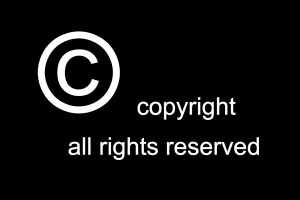Copyright laws can be confusing and intricate if you are unfamiliar with them. However, the Book Launch Team is here to help you understand what you can and cannot use in your digital books.

First, lets define a few terms. Copyrights, defined by the OSU Copyright Resources Center, are legal ownership or rights that allow “the right to copy, distribute, publish, perform, and display a work, as well as prepare derivative works” which can be applied to “any content created in a tangible format.” Fair Use acts as a defense against charges of copyright infringement by allowing the public to use copyrighted content based on four factors: the purpose you are using the content for (commercial versus nonprofit), the nature of the content, the amount of content you are using compared to the copyrighted content as a whole, and the effect of the content being used, including the value.
For example, in some cases Fair Use allows for content that has been copyrighted to be able to be used without having to receive permission because of the purpose, like nonprofit use and educational purposes. This is extremely useful for digital textbook authors so they are able to use various content, typically images, without having to get the permission of the creator. However, it is vitally important to remember that just because someone is using a copyrighted image for educational purposes, it does not mean it is automatically Fair Use; rather, this is only one of the four factors considered when judging Fair Use. Here are a few links to determine if your content is eligible for Fair Use:
In addition, be sure to check out the OSU copyright resource video on Fair Use here and this copyright chart.
It is also important to understand the public domain. Content in the public domain is free for anyone to use for any purpose and does not have a copyright. This content may have been copyrighted at one point and the copyright expired. Here are a few resources to help you understand the public domain:

Content may also have a Creative Commons license, which is an alternative to traditional copyright, and allows use of the content with some restrictions, such as requiring attribution, or limiting use to non-commercial projects. Learn more about Creative Commons licensing:
Check out the OSU Open Photo blog to see our growing collection of public domain and Creative-Commons licensed photos to use in your projects!
Jessica Meindertsma, Rights Management Specialist from The Copyright Resources Center at OSU Libraries and the Health Sciences Copyright Management Office, will be joining us for the first Book Launch Bootcamp to answer questions about content and copyrights.






